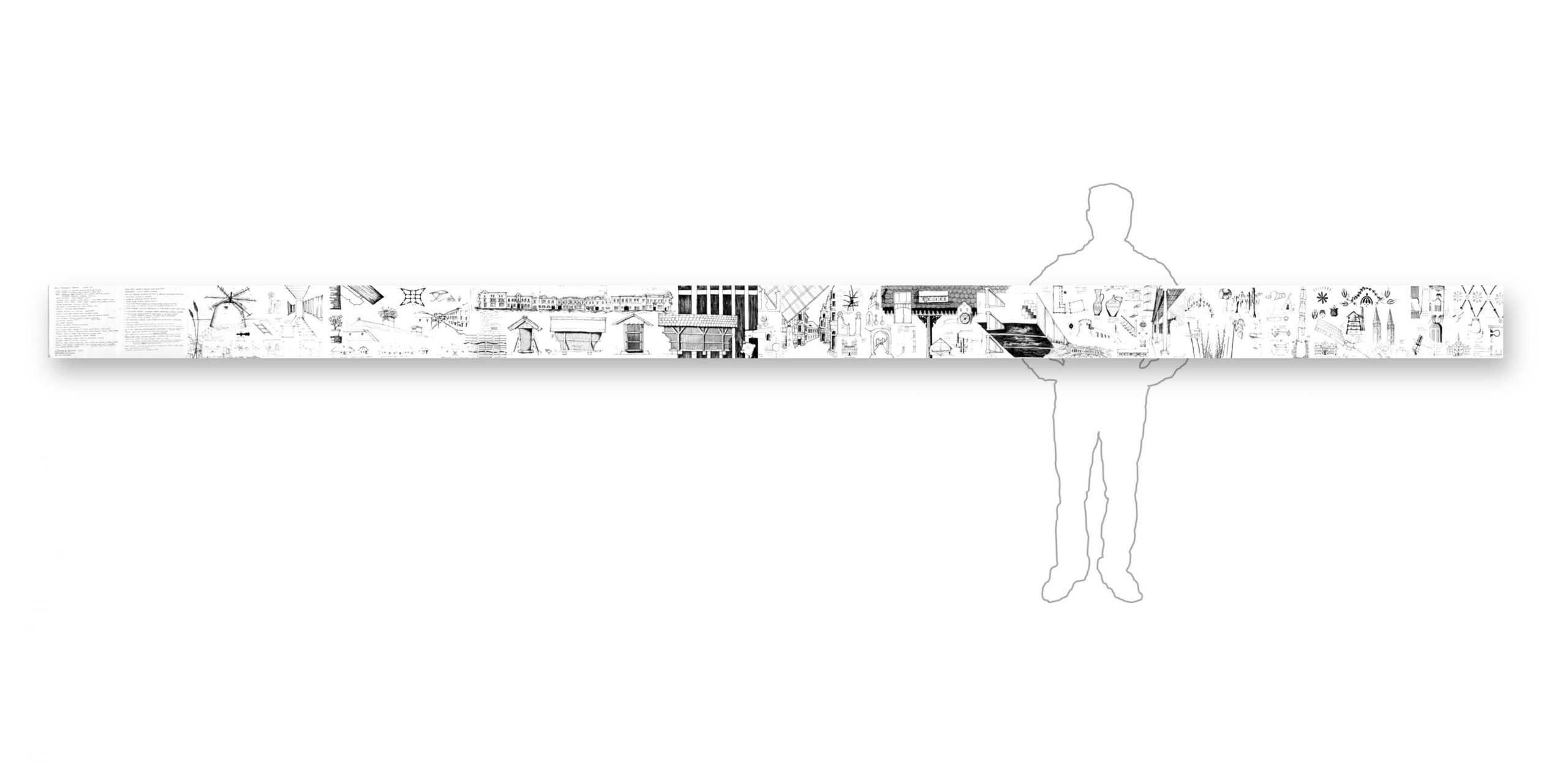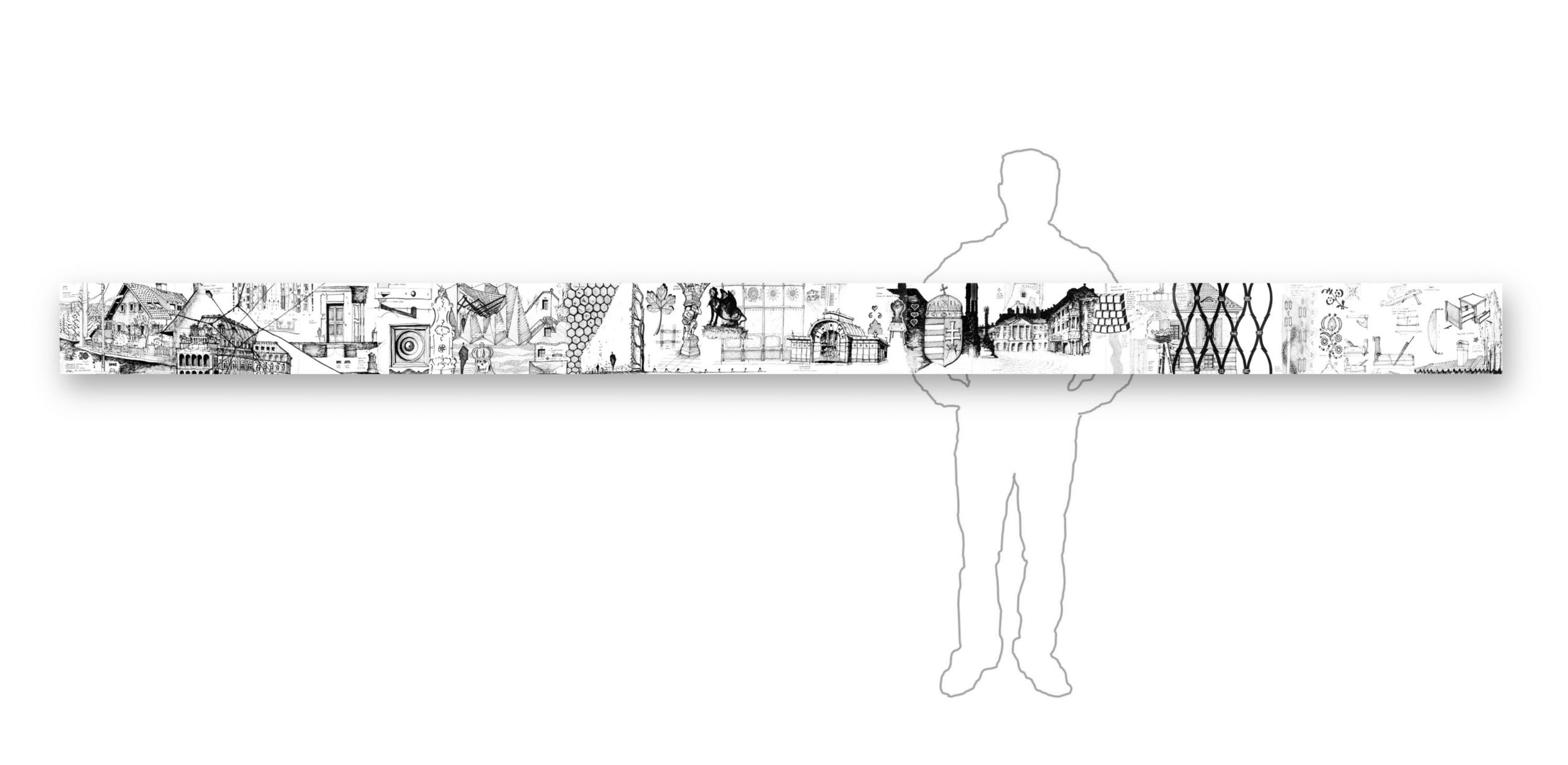6.19.Hungary-3-detail-a Highlights Relevant to Sustainable Design:
Country pickles may inspire rethinking modern food processes.
In America, vegetables and other food often travel hundreds of miles from farm to table. The distance increases the fuel consumption, the emissions, and the cost. This sketchbook includes many daily sightings in Hungary. The sightings are unique in the country and have little to do with architecture. Examples range from traffic lights that turn yellow before they turn both red and green to geraniums, which typically appear on windowsills at both village houses and high-rise apartment balconies. Along with geraniums, pickle jars often sit on windowsills in the villages. I learned the low-tech trick to make pickles from a local farmwoman selling linens.
Take cucumbers from the garden and stick them in a mason jar. Add water, salt, white vinegar, and dill. Put the jar on a sunny windowsill during the day and bring it in at night. After about three days, the cucumbers start fermenting, and you should see tiny bubbles. After about five days when the bubbles have stopped rising, transfer the jar to your refrigerator. When refrigerated, the pickles should keep for a couple of weeks. While cold-packed pickles may have a risk of bacteria, modern processes and technology could provide solutions.
This village observation is more about rethinking how we process food than the actual production of any given item. Imagine the production reduction in energy consumption with localized farming over commercial corporate processes. Also see the chapter titled “Perpetual Food Machine” in part 3, “Commercial Impact,” (Learn from Looking book) that talks about reducing the distance from farm to table by providing a means to grow indoors in cities and towns that do not have year-round favorable climates for outdoor farming. These Hungarian villagers literally walk from the garden to the windowsill rather than the energy consumption and waste of industrial production:
- Tractors help grow cucumbers.
- Trucks transport them to pickling plants.
- Machines produce single-use jars, labels, and case boxes.
- Energy is used to produce and package the pickles.
- Trucks take the palettes of cased jars to distribution centers.
- Trucks take cases of jars to grocery stores.
- We drive over and back to the grocery store in our cars and SUVs.
- We enjoy the pickles over whatever period of time they are in our refrigerator.
- We throw away the pickle jar or recycle it, which uses more energy than reusing it.
6.18.Hungary-3-Horizontal-with-Figure (The figure outline in this image is for scale to illustrate the size of the fold-out field drawing. The descriptions of certain key elements and insights are included with the accompanying drawings in this section.)

Author and illustrator: Charlie Szoradi is an architect, inventor, and the CEO of Independence LED Lighting. He writes about many other topics related to farm to table processes through his extensive travels around the world.
If you have found this posting online, it is an excerpt from Mr. Szoradi’s book Learn from Looking that served as the inspiring seed content for this drawing share resource. For additional drawings and insights on farm to table and agriculture , we hope that you enjoy exploring LearnfromLooking.com. You can search via general terms such as sustainability as well as narrower terms such as cucumbers and farm to table.



